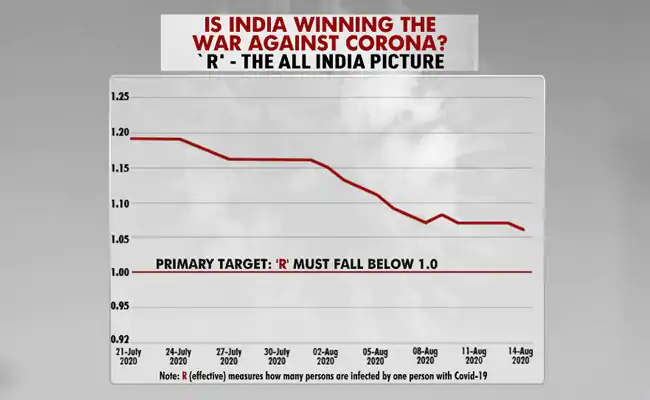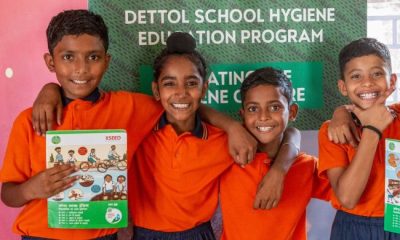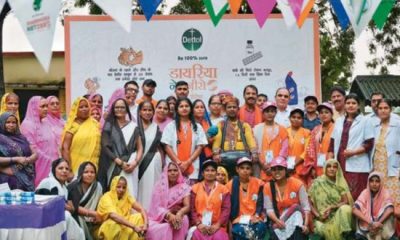Highlights
- India’s COVID-19 tally rose to 26,47,663 on Monday
- India has exceeded 3 crore tests: Union Health Ministry
- Testing has been increased with an aim to keep positivity rate low
New Delhi: Sharing an update on the coronavirus tests done so far and how the country is fighting and managing the COVID crisis, the Union Health and Family Welfare Ministry said on Monday, that India has surpassed three crore COVID-19 tests. With the aim to keep both positivity rate and fatality rate low, the ministry further said that the focus in the fight against the highly contagious virus is on aggressive testing and added,
Focussing on timely and aggressive testing, India has exceeded 3 crore tests. Enhanced and timely testing is not only keeping the positivity rate low but also the fatality rate low.
Also Read: Why Is India Experiencing Spike In COVID-19 Cases? Dr Randeep Guleria OF AIIMS Explains
Focussing on timely & aggressive testing, India has exceeded 3 crore tests. Enhanced and timely testing is not only keeping the Positivity Rate low but also the Fatality Rate low: Ministry of Health pic.twitter.com/7OgK6R9ixC
— ANI (@ANI) August 17, 2020
The ministry further said,
Aggressive testing leads to early identification and isolation of COVID-19 positive cases. This coupled with efficient clinical treatment brings the fatality rate down.
According to the data shared by the Indian Council of Medical Research (ICMR) on Monday, around 3 crore (3,00,41,400) samples were tested up to August 16. In an official statement, ICMR noted,
3,00,41,400 samples tested up to August 16 for COVID19. Of these, 7,31,697 samples were tested yesterday (Sunday).
Also Read: India’s COVID-19 Fatality Rate Drops To 2.23 Per Cent, Lowest Since April 1
3,00,41,400 samples tested up to 16th August for #COVID19. Of these, 7,31,697 samples were tested yesterday: Indian Council of Medical Research (ICMR) pic.twitter.com/2HPc53EYb6
— ANI (@ANI) August 17, 2020
Apart from testing figures, sharing details about the testing facilities, Dr Harsh Vardhan, Union Minister of Health and Family said,
Today, total testing labs in India have gone up to 1470, of which, government labs are 969 and private labs are 501. We all will continue to fight coronavirus, will not get scared and make sure we come as a winner in this battle.
India’s COVID-19 tally rose to 26,47,663 on Monday with a single-day spike of 57,981 infections, while the death count crossed the 50,000 mark with 941 fresh fatalities, according to the Union Health Ministry data. The recoveries surged to 19,19,842, pushing the recovery rate to 72.51 per cent, the data updated at 8 am on August 17 showed.
Using the ‘R’ rate or the Reproduction Rate, NDTV also measured how India is fighting the coronavirus battle. R-rate is a measure of how many people are infected by one infected person. If ‘R’ is 2.0, it indicates that one person who is infected with COVID-19 will on average infect another two people. Those two persons will each go on to infect another two persons – and so the infection spreads exponentially in society resulting in a pandemic. Experts suggest it is crucially important to ensure ‘R’ falls below 1.0 (that is, one infected person spreads the virus to fewer than one other person). Only when the R falls below 1.0 will the pandemic slowly fade away.
The data studied shows that the all-India average ‘R” indicates that the virus is not out of control in India, the situation is indeed improving in the country. The ‘R’ has dropped below 1.0 – the first target for all nations – in Gujarat, Jharkhand and J&K. Delhi has been the most successful state in ‘flattening the curve’ of new cases – but there is a significant new concern that the trend in ‘R’ is revealing. While the level of ‘R’ in Delhi is still low, there has been a rise in ‘R’ from 0.75 to 1.05 in the span of just two weeks.
Tamil Nadu, another successful state for battling coronavirus crisis with an R rate around 1.0 has recently started to show the spike in cases and a worrying uptick in R number.
The data studied highlights that the war is still on against the Coronavirus and states need to beware of new spikes and there is no room for complacency.
Director of AIIMS, Dr Randeep Guleria talking about India’s growing number of cases and giving a thumbs up to the increase in numbers of tests in the country said,
India will to continue TO see a spike in coronavirus cases over the following days and that is basically related to the fact that our population is very huge and now COVID cases have shifted to smaller or rural areas and the cumulative number is quite big. On the other hand, India is also testing much more, we have crossed, more than 6 lakh tests per day, so that is also adding to the load. Overall, the spike in COVID-19 numbers can be attributed to these things – firstly, we are picking up more as we are testing more and more people, secondly, the virus has shifted to smaller cities or areas in multiple states and that is also accounting for the huge spike. Talking about the good part, India’s number of cases per million population is still low, even the mortality rate is low as compared to other countries.
NDTV – Dettol Banega Swasth India campaign is an extension of the five-year-old Banega Swachh India initiative helmed by Campaign Ambassador Amitabh Bachchan. It aims to spread awareness about critical health issues facing the country. In wake of the current COVID-19 pandemic, the need for WASH (Water, Sanitation and Hygiene) is reaffirmed as handwashing is one of the ways to prevent Coronavirus infection and other diseases. The campaign highlights the importance of nutrition and healthcare for women and children to prevent maternal and child mortality, fight malnutrition, stunting, wasting, anaemia and disease prevention through vaccines. Importance of programmes like Public Distribution System (PDS), Mid-day Meal Scheme, POSHAN Abhiyan and the role of Aganwadis and ASHA workers are also covered. Only a Swachh or clean India where toilets are used and open defecation free (ODF) status achieved as part of the Swachh Bharat Abhiyan launched by Prime Minister Narendra Modi in 2014, can eradicate diseases like diahorrea and become a Swasth or healthy India. The campaign will continue to cover issues like air pollution, waste management, plastic ban, manual scavenging and sanitation workers and menstrual hygiene.
[corona_data_new]






























